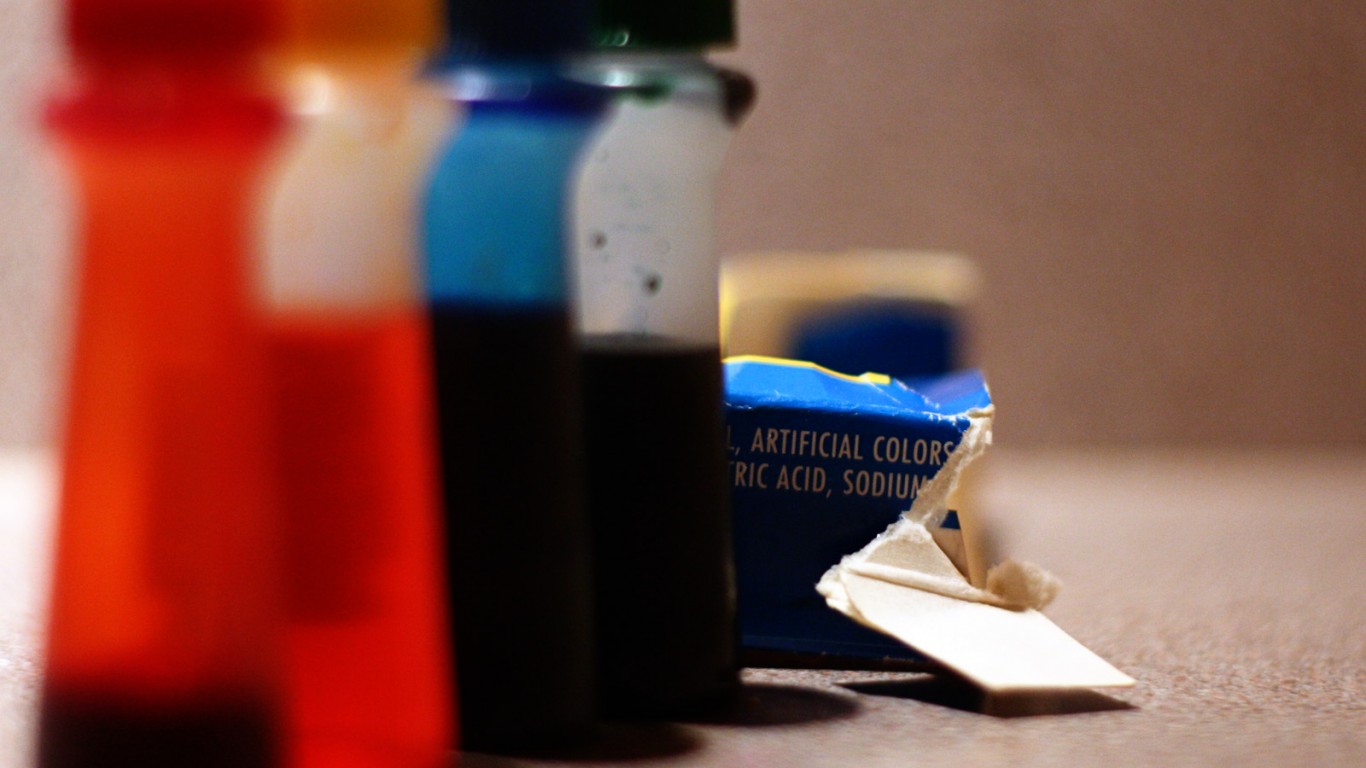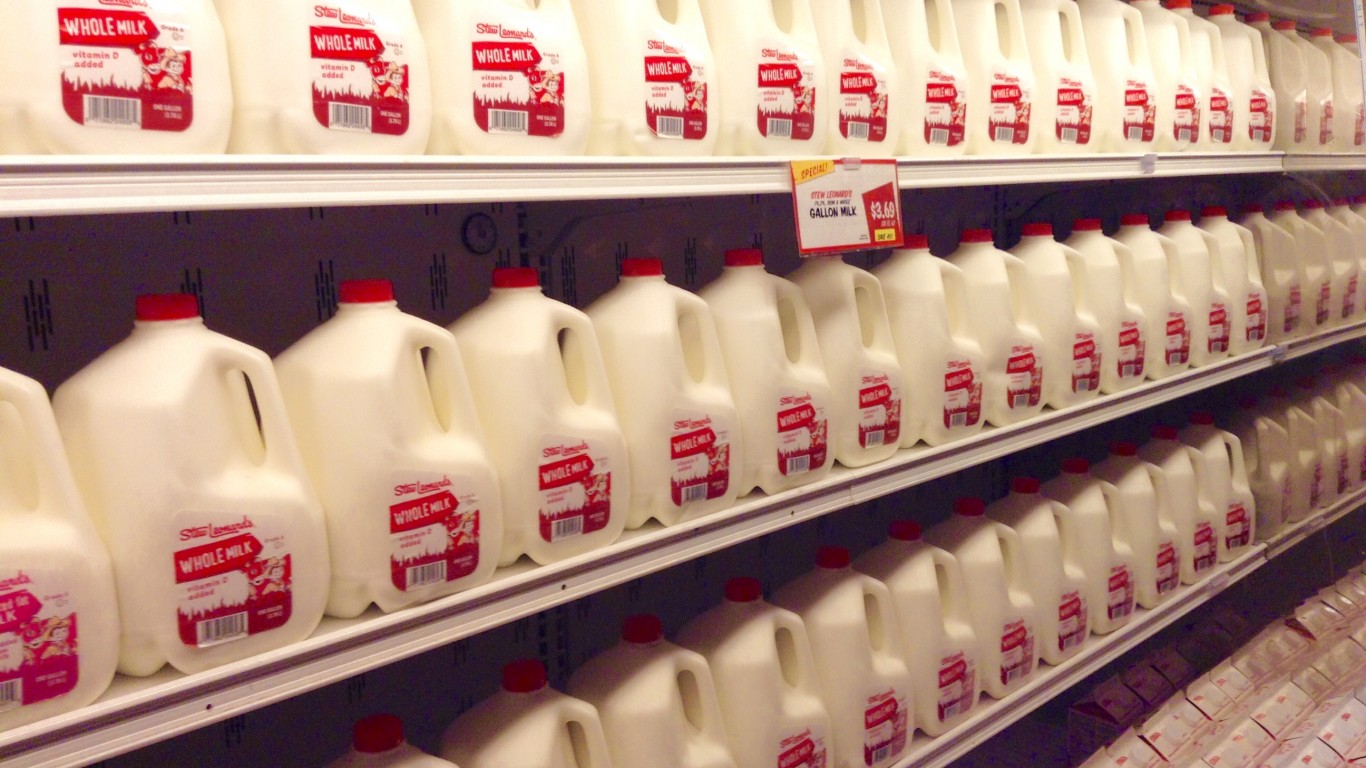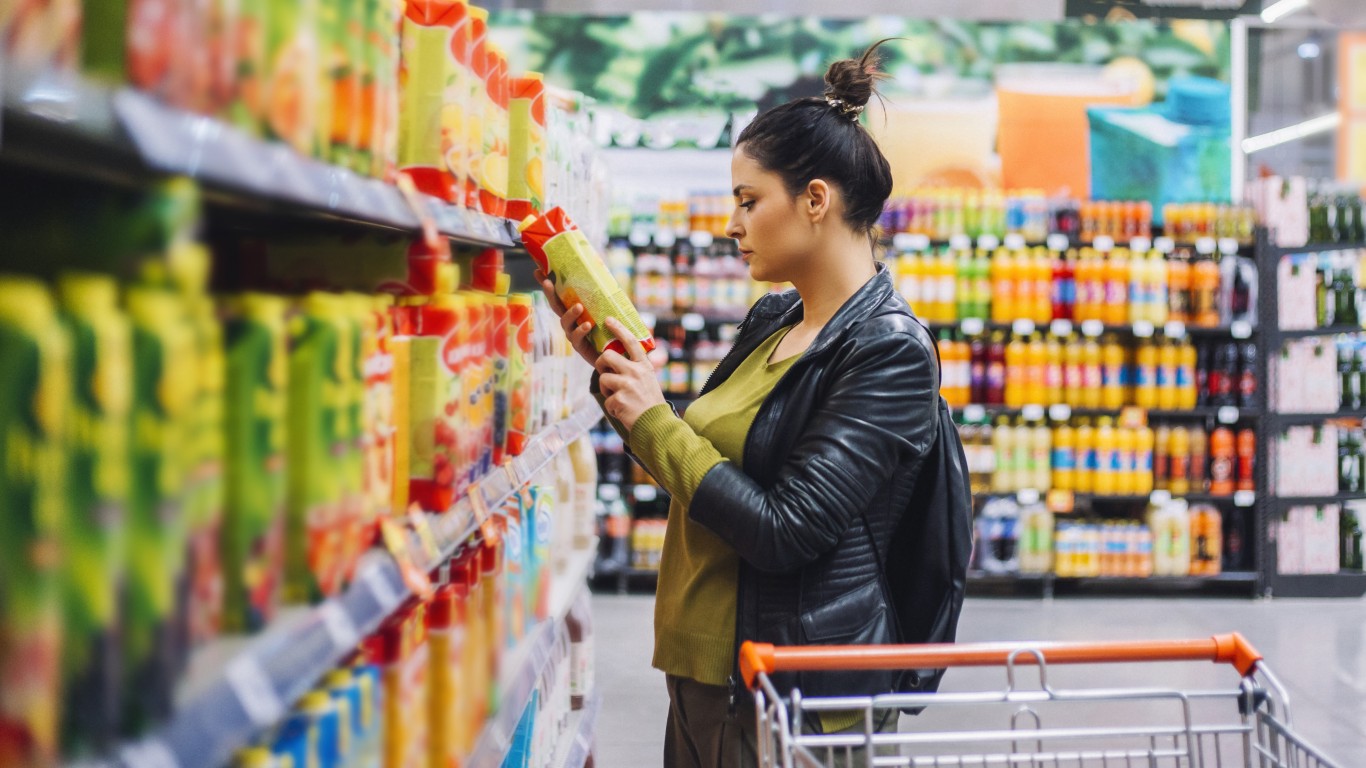
This post may contain links from our sponsors and affiliates, and Flywheel Publishing may receive
compensation for actions taken through them.
One of the (many) hot-button issues raised by Brexit, was the controversy over chicken washed in chlorine. Chlorine? Isn’t that what they put in swimming pools?
Yes, but it’s used in pools because it’s an effective antibacterial agent, and most American chickens are raised under conditions that promote bacterial growth, which a chlorine rinse destroys. (If a little chlorine doesn’t bother you, sample our nation’s favorite bird at one of the 30 best fried chicken places in America.)
The EU banned the use of chlorine and related chemicals for chicken in 1997, and the UK abided by the ban. Many British health officials and consumers, however, were concerned that the disconnect from Europe coupled with a post-Brexit trade deal with the United States would see their supermarkets suddenly flooded with chlorinated chicken. (It hasn’t happened yet.)
Chlorine is but one of the many treatments, ingredients, and foodstuffs that are considered acceptable by authorities in the U.S. but are banned or restricted in the EU and/or other countries around the world.
Some are chemicals added to foods or applied to their exteriors, like diphenylamine, a fungicide used to clean apples and other fruits; ractopamine, a muscle-relaxant fed to pigs to promote growth and reduce fat; and azodicarbonamide, a bleaching agent used in packaged processed foods like frozen dinners and flour mixes — and also, unsettlingly, a constituent of foamed plastic items, like yoga mats.
Other bans apply to foods themselves, like farm-raised salmon (known to contain various persistent organic pollutants, or POPs) or genetically modified fruit.
Additives, by the way, aren’t the only problem with good-for-you fare like fish and fruit. These are some healthy foods that are actually ruining your diet.
Click here to see things Americans eat that other countries ban.
In the case of certain brand-name foods sold internationally — breakfast cereal, snack foods, soft drinks, etc. — the manufacturers reformulate their products to conform to local regulations.
24/7 Tempo has assembled a list of things we consume in America that are forbidden in whole or in part in other parts of the world.
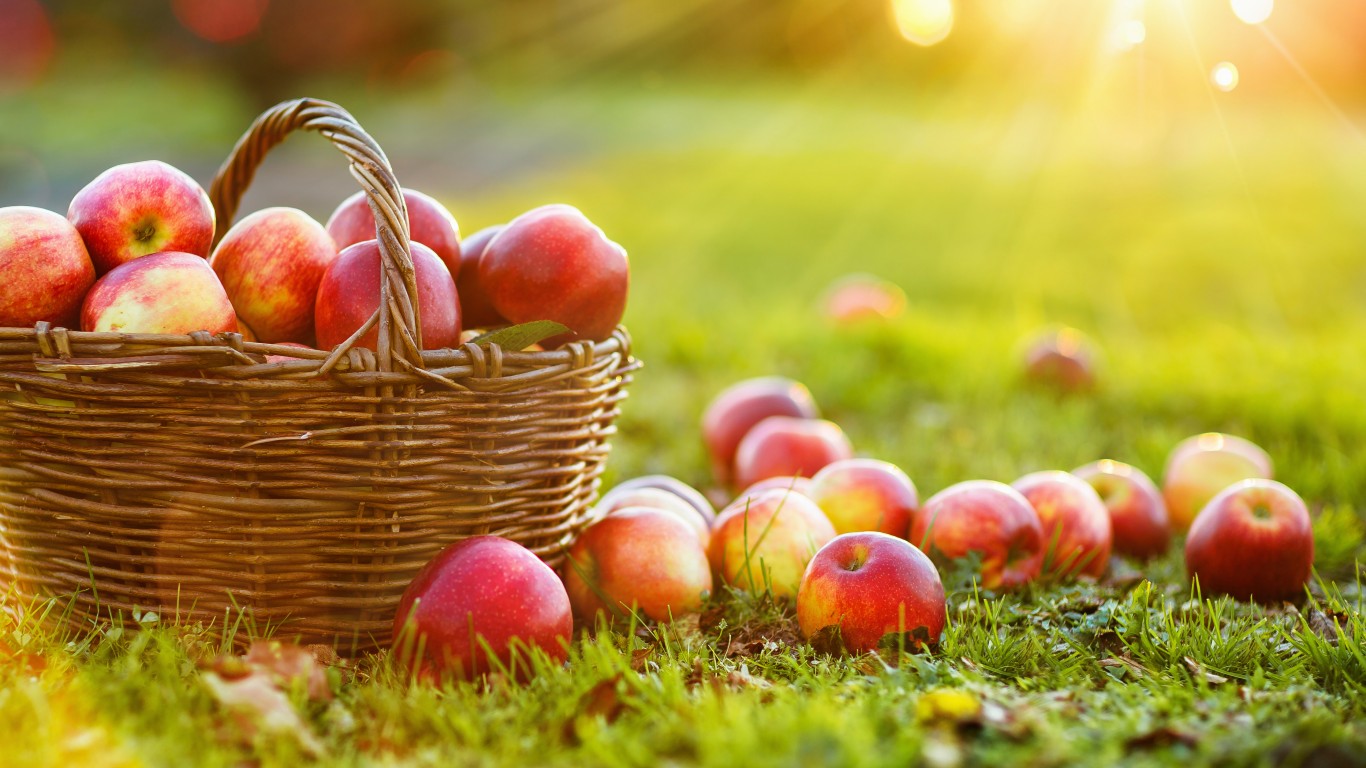
Apples and other fruit
> Banned ingredient: Diphenylamine (DPA)
> Where they’re banned or restricted: The EU
[in-text-ad]
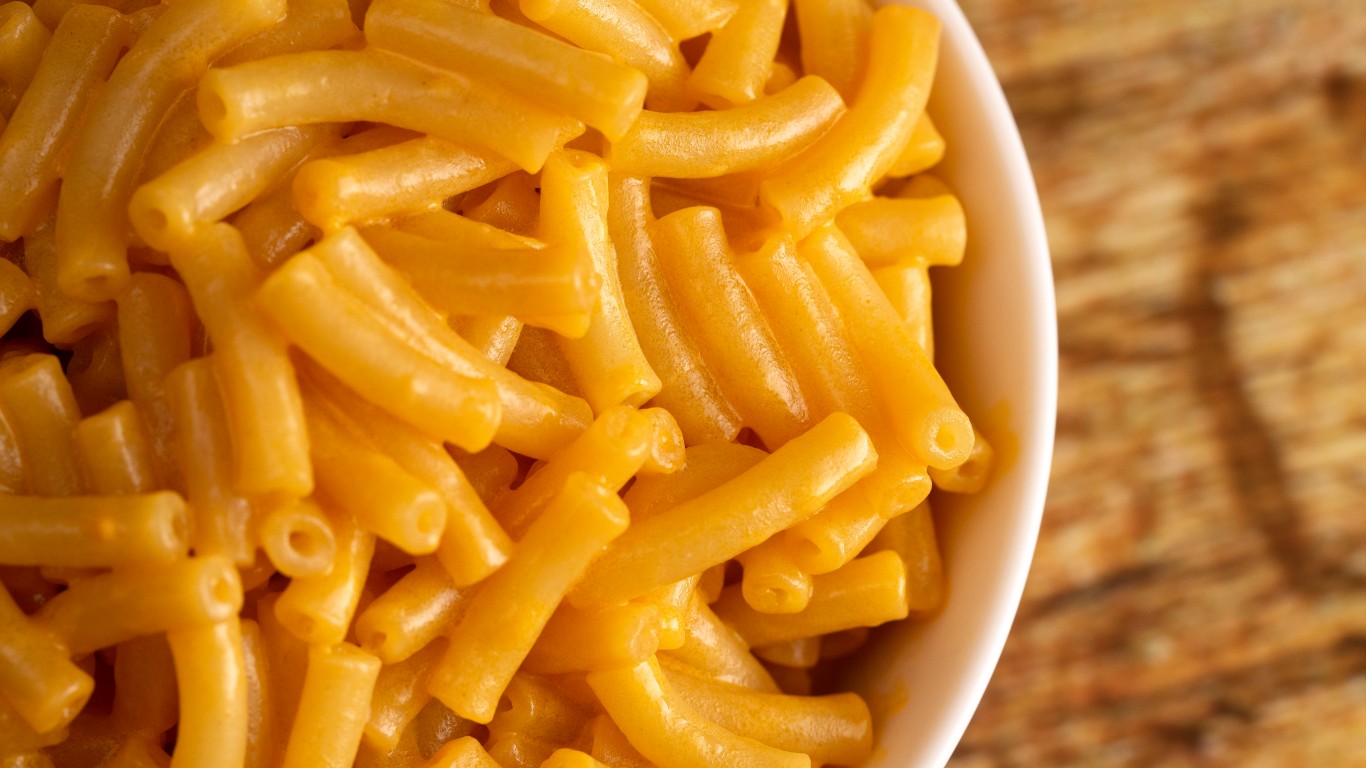
Boxed mac ‘n’ cheese
> Banned ingredient: Artificial food coloring
> Where it’s banned or restricted: Norway, Austria
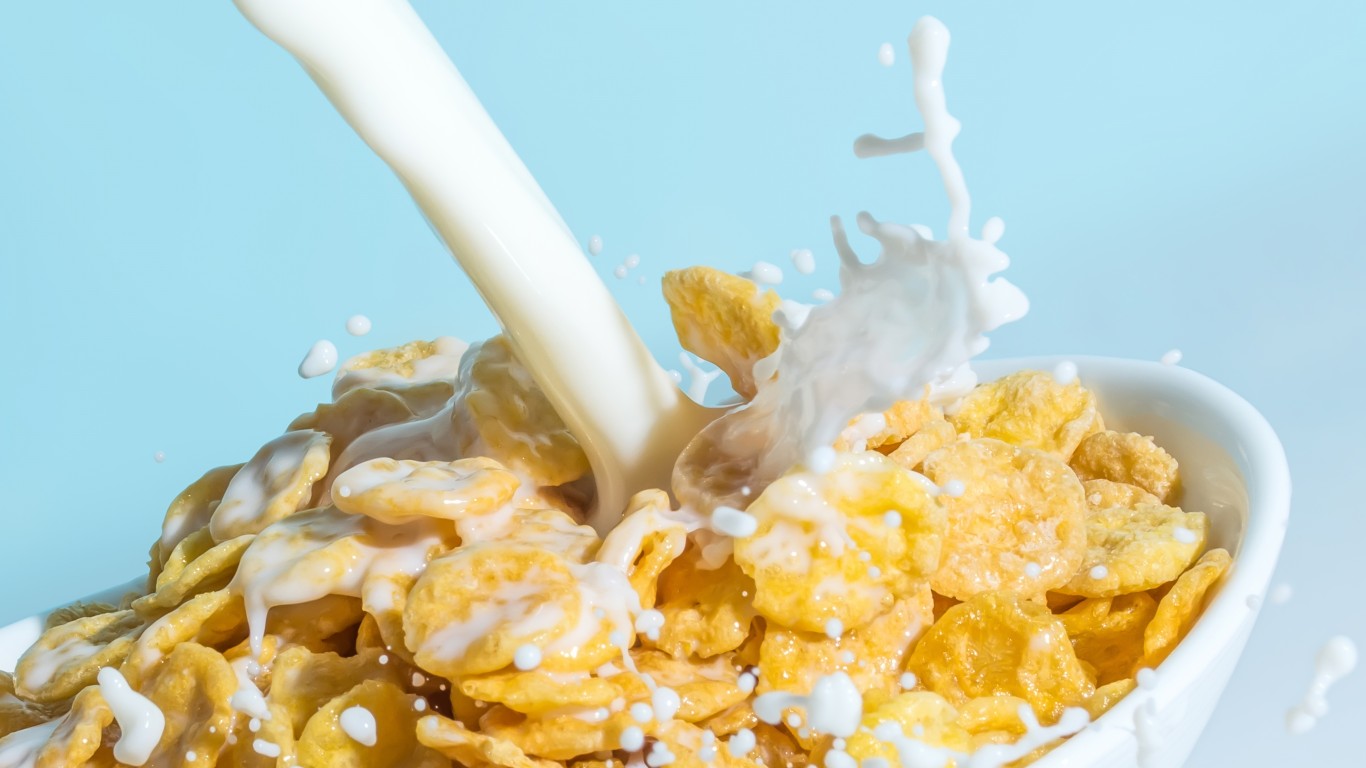
Breakfast cereal
> Banned ingredients: Butylated hydroxyanisole (BHA) and Butylated hydroxytoluene (BHT)
> Where it’s banned or restricted: The EU, Australia, New Zealand, Canada, Japan

Chicken
> Banned ingredients: Arsenic and Chlorine
> Where it’s banned or restricted: The EU
[in-text-ad-2]
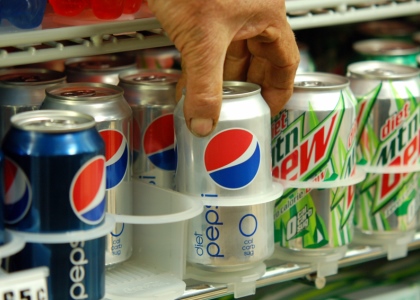
Citrus soft drinks
> Banned ingredient: Brominated vegetable oil
> Where it’s banned or restricted: The EU, Japan
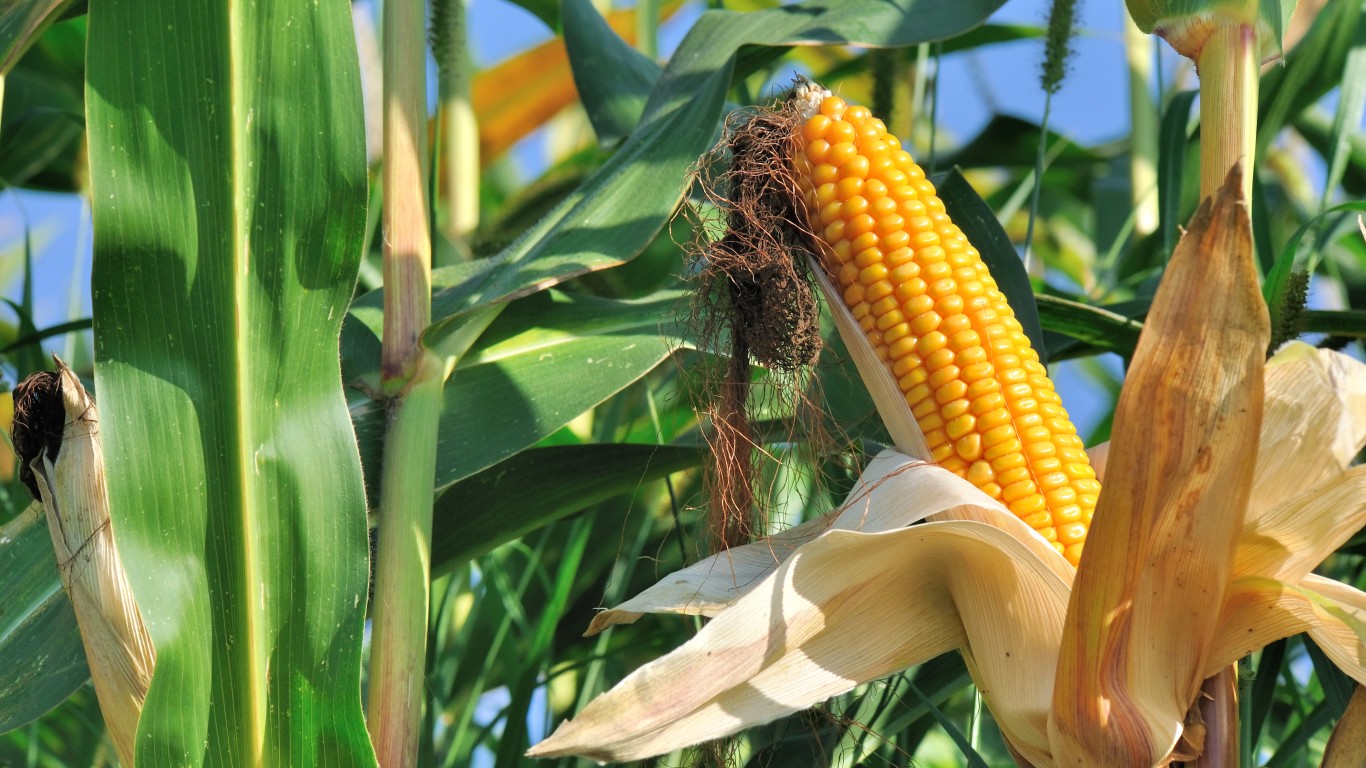
Corn on the cob
> Banned ingredient: GMO corn
> Where it’s banned or restricted: The EU (most countries)
[in-text-ad]
Farm-raised salmon
> Banned ingredient: Persistent organic pollutants (POPs)
> Where it’s banned or restricted: Australia

Fat-free potato chips and crackers
> Banned ingredient: Olestra
> Where they’re banned or restricted: The UK, Canada
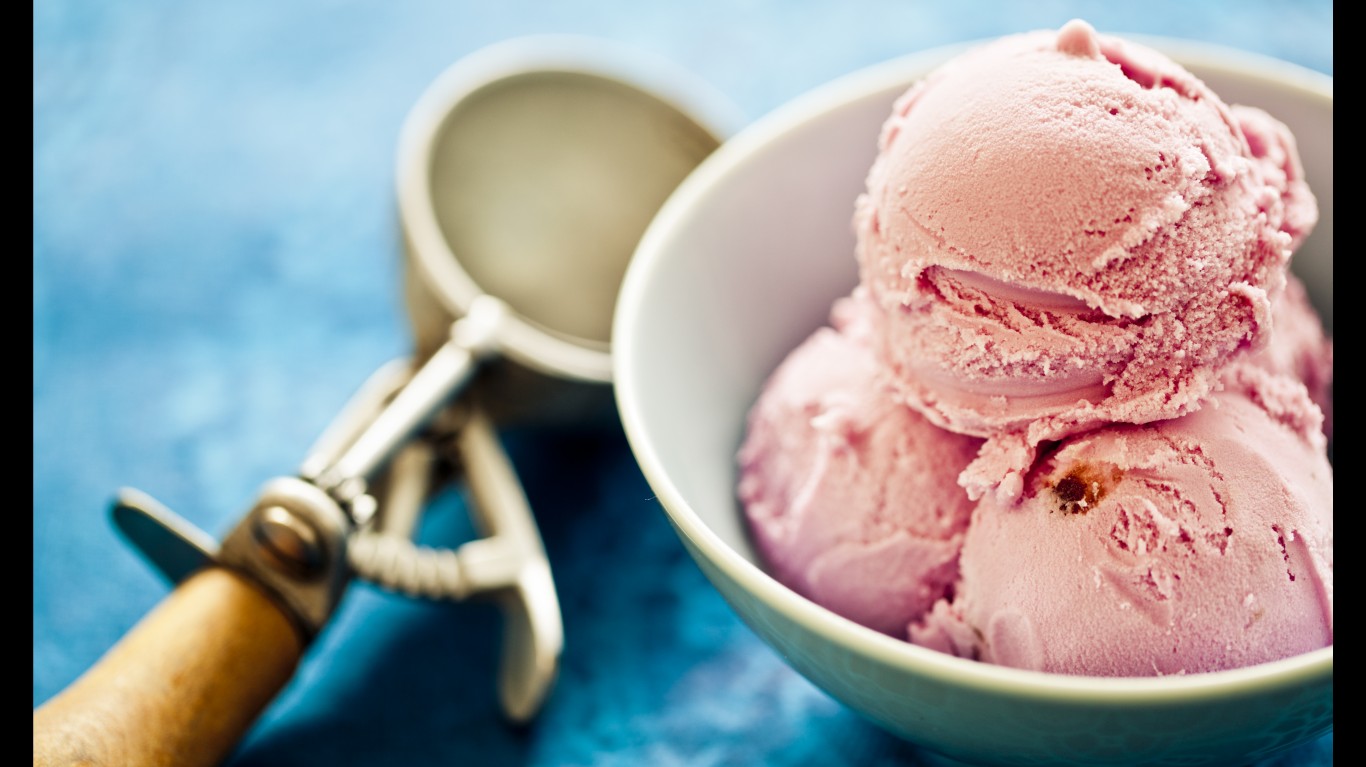
Ice cream
> Banned ingredient: Carrageenan
> Where it’s banned or restricted: The EU
[in-text-ad-2]
Jell-O
> Banned ingredient: Artificial food coloring
> Where it’s banned or restricted: Norway, Austria
Milk
> Banned ingredient: Recombinant bovine growth hormone (rBGH)
> Where it’s banned or restricted: Australia, New Zealand, Japan, Israel, Canada, Norway, Switzerland, the EU (most countries)
[in-text-ad]
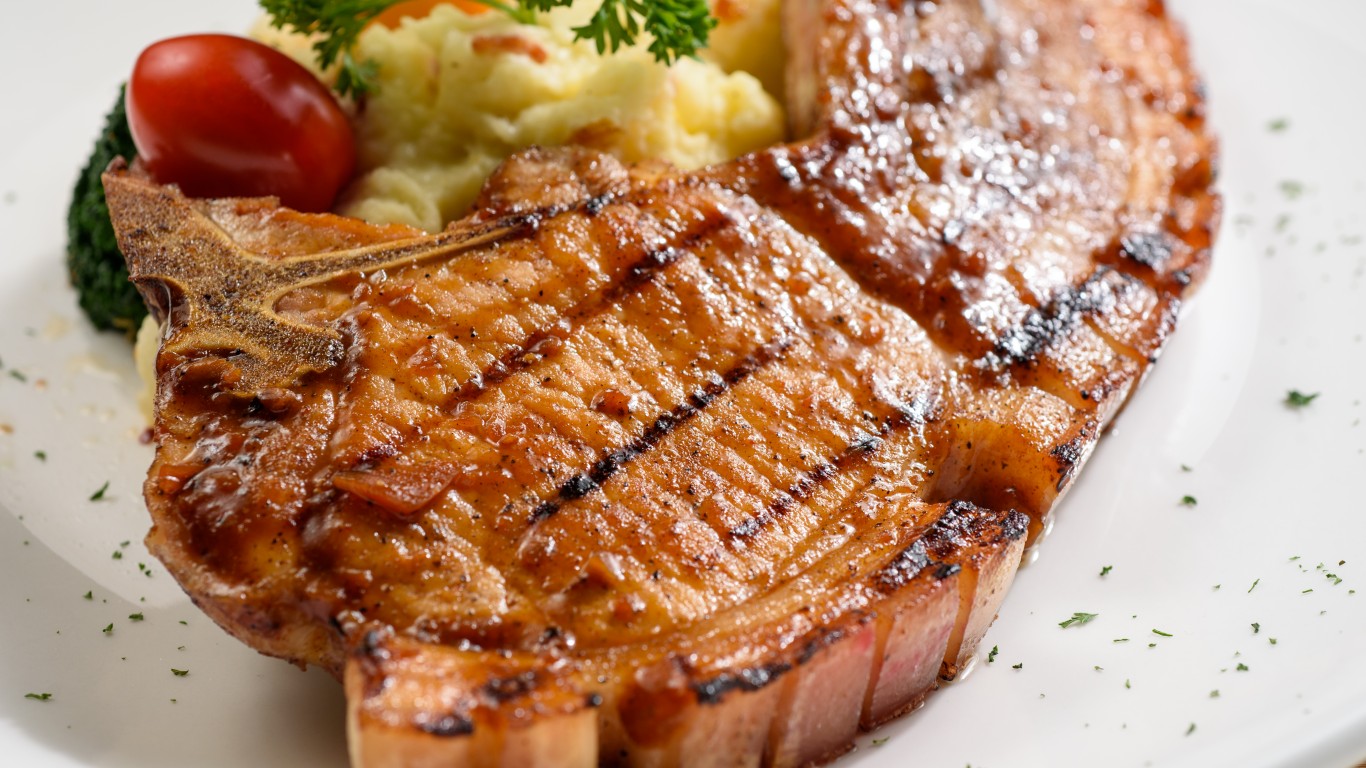
Pork chops and spareribs
> Banned ingredient: Ractopamine
> Where they’re banned or restricted: The EU, Russia, China, and other countries
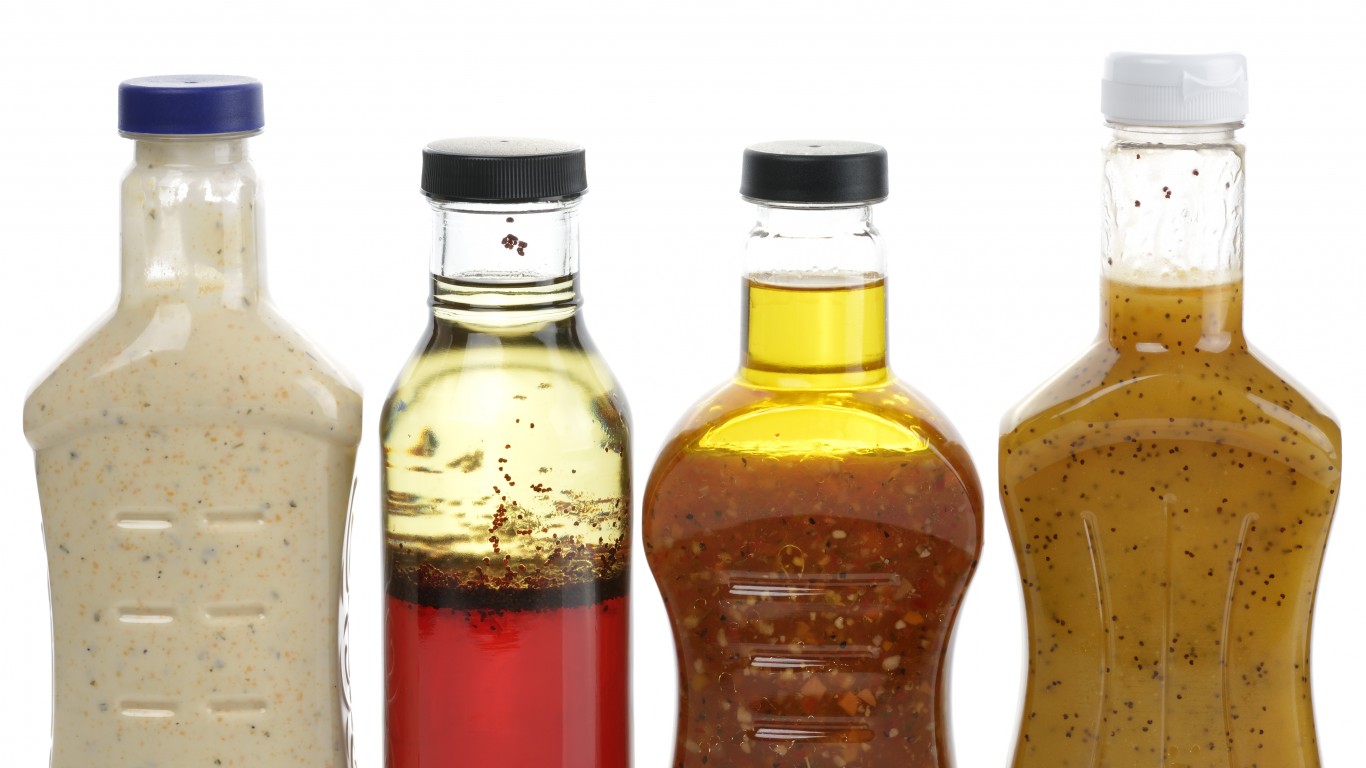
Salad dressing
> Banned ingredient: Carrageenan
> Where it’s banned or restricted: The EU

Soy milk
> Banned ingredient: GMO soybeans
> Where it’s banned or restricted: The EU (most countries)
[in-text-ad-2]
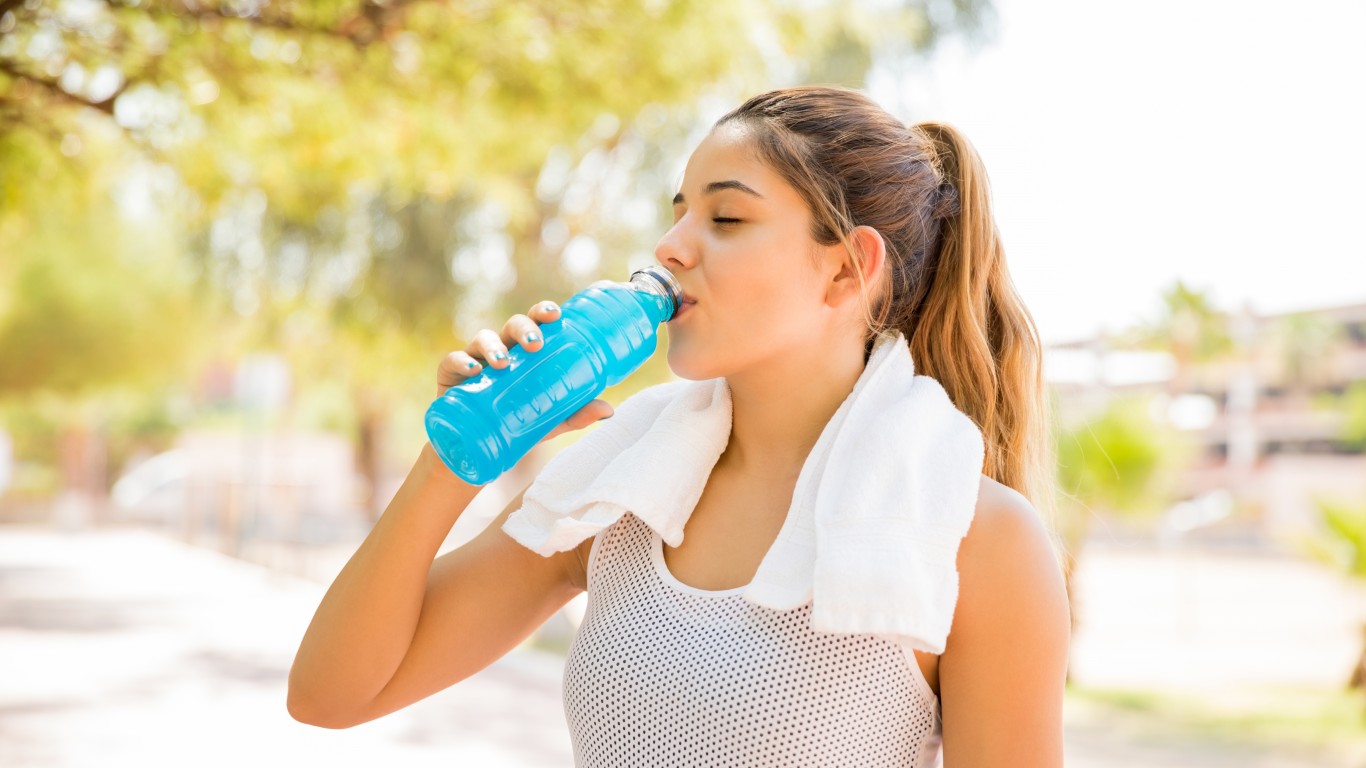
Sports drinks
> Banned ingredient: Brominated vegetable oil
> Where it’s banned or restricted: The EU, Japan
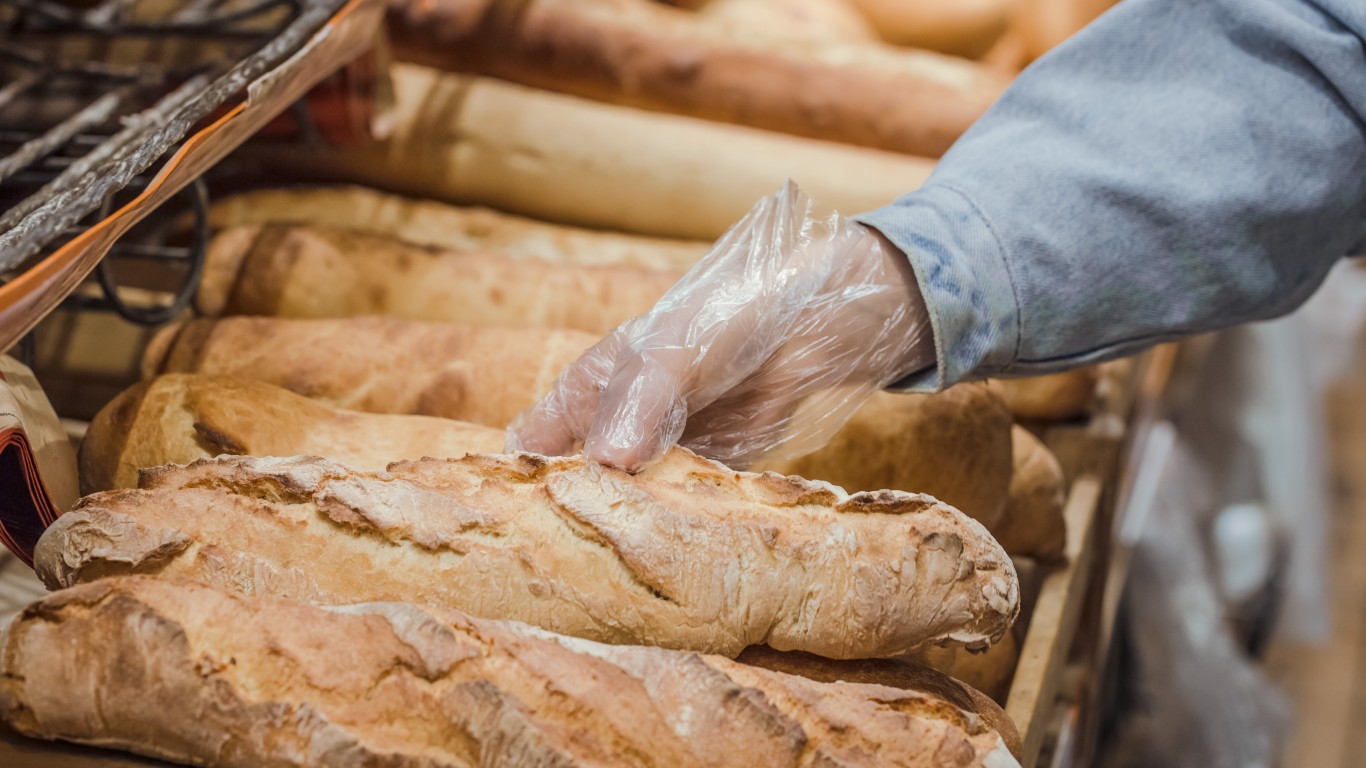
Supermarket bread
> Banned ingredient: Potassium bromate
> Where it’s banned or restricted: The EU, Canada, Argentina, Brazil, Peru, Nigeria, South Korea, Sri Lanka, India, China, and other countries
[in-text-ad]
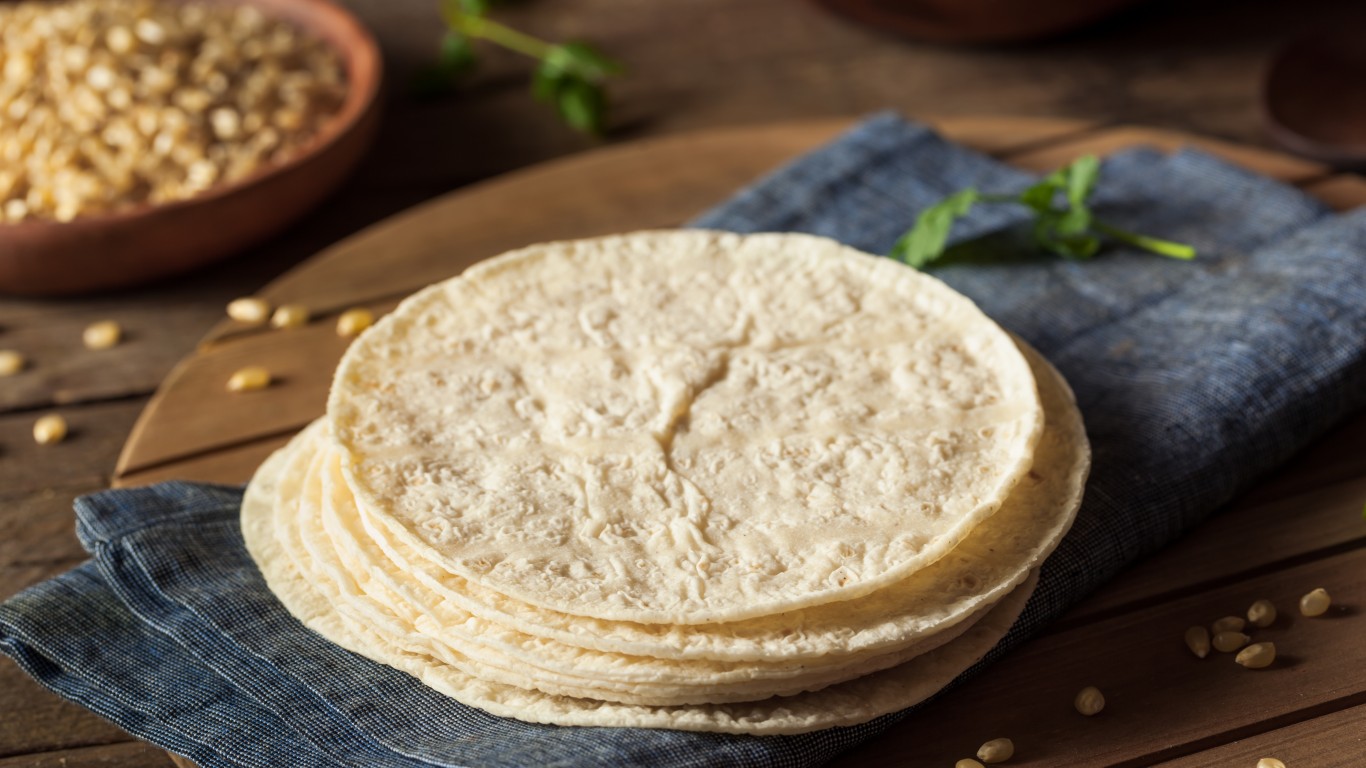
Supermarket tortillas
> Banned ingredient: Propylparaben
> Where they’re banned or restricted: The EU

Tropical fruit plates
> Banned ingredient: GMO papaya
> Where they’re banned or restricted: The EU (most countries), Japan, Thailand, Australia, New Zealand

Trail mix
> Banned ingredient: Propylparaben
> Where it’s banned or restricted: The EU
[in-text-ad-2]
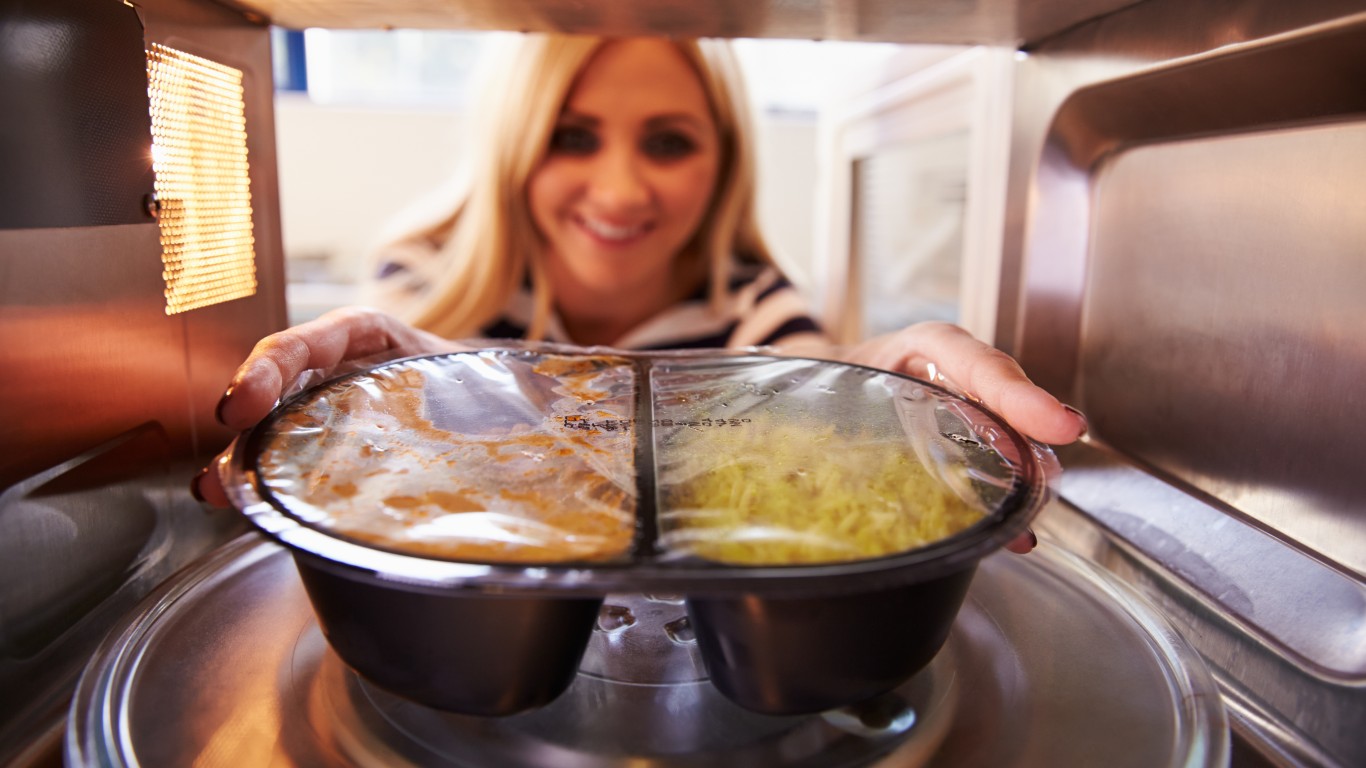
TV dinners
> Banned ingredient: Azodicarbonamide (ADA)
> Where they’re banned or restricted: The EU, Singapore, the UK, Australia
Get Ready To Retire (Sponsored)
Start by taking a quick retirement quiz from SmartAsset that will match you with up to 3 financial advisors that serve your area and beyond in 5 minutes, or less.
Each advisor has been vetted by SmartAsset and is held to a fiduciary standard to act in your best interests.
Here’s how it works:
1. Answer SmartAsset advisor match quiz
2. Review your pre-screened matches at your leisure. Check out the advisors’ profiles.
3. Speak with advisors at no cost to you. Have an introductory call on the phone or introduction in person and choose whom to work with in the future
Get started right here.
Thank you for reading! Have some feedback for us?
Contact the 24/7 Wall St. editorial team.

 24/7 Wall St.
24/7 Wall St.